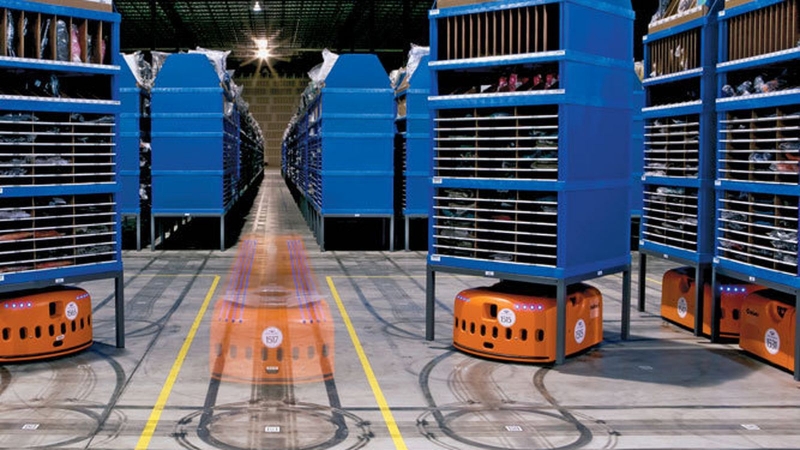Robots in The Warehouse
I’ll admit it: I’m obsessed with robots. But how could I not be? Recently I’ve looked at a machine-written screenplay, how robots fit into the workplace, Manus X Machina, and chat bots. This week a story about Amazon triggering a “robot arms race” has caught my imagination. So what’s going on in Amazon’s warehouses? And why is it important?

Amazon’s warehouses are different from others. Looking around one, you would think you had arrived in the future: on the slick, shiny floors a regimented army of small orange robots carry towers of buyers’ purchases to workers who then pluck off the items they wish to ship before the robot hurries back for more (watch for yourself). It’s a neat, orderly dance, and one which, by all accounts, makes the processing of orders quicker and more efficient.
The machines are called Kiva robots and were originally developed by Kiva Systems. In 2012, Amazon acquired Kiva Systems for $775 million – the second largest acquisition in history. Since then, the company has ceased all marketing efforts and has not announced any new customers. The natural conclusion, then, is that Amazon is just not interested in sharing this technology with competitors.
Why? Traditionally goods are transported around a warehouse using a conveyor system or human operated machines such as forklifts: a labour intensive and inefficient approach. However, the process developed by Kiva Systems starts with storing items on portable storage units. Then, when an order is entered into the database, the software locates the closest Kiva robot and instructs it to collect and deliver the item to a specified human operator. The process is elegant and effective.
But Amazon, thanks to Kiva Systems, is the only major retailer to benefit from this type of technology at scale. All other major retailers still rely on the traditional, human-dependent approach.
But perhaps not for long: though Amazon’s acquisition of Kiva Systems frustrated its competitors’ attempts to introduce robots to their warehouses, a new wave of robotics startups (one, 6 River Systems, was even founded by former Kiva executives) have now set their sights on warehouse automation.
Though Amazon couldn’t prevent the technology reaching its competitors forever, the setback the company has created has fuelled something of an arms race amongst retailers now all seeking their own fleet of warehouse robots. For those in the robotics industry, there is huge potential here, and that means that we are likely to see the emergence of even more automated warehouse systems.
What do you think of Amazon’s attempts to keep warehouse robotics to themselves? And what further developments are do you think we’ll see in this area?
Email me your thought.
